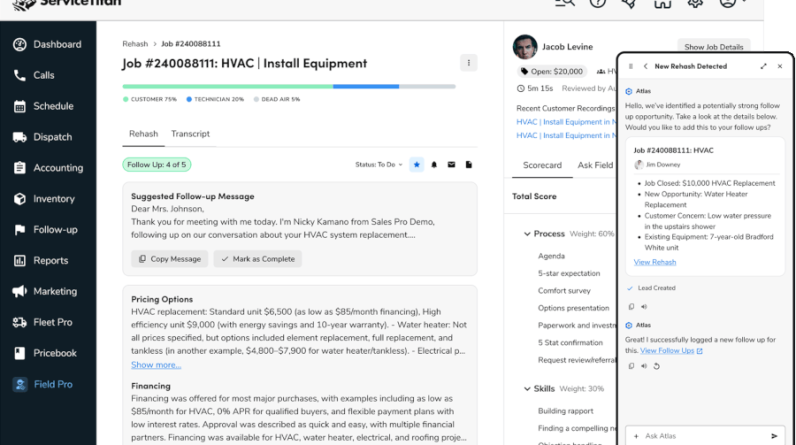
In today’s ever-evolving technological landscape, particularly in the technology driven financial realm, agility, reliability, and strategic deployment of novel technologies are paramount for maintaining a competitive edge. While traditional treasury processes were often manual and labor intensive, integrating automation technologies has streamlined operations, freeing valuable resources for higher value tasks. Moreover, AI algorithms revolutionize decision making by leveraging vast datasets to uncover actionable insights and mitigate financial risks.
By implementing Automation, ML, and AI, Financial companies enhance day-to-day operations management from optimizing cash and liquidity management to improving collateral management processes to ensuring regulatory compliance. Through automating routine tasks and leveraging AI driven insights, organizations optimize treasury operations, better navigating modern finance’s complexities and driving sustainable growth.
Ardhendu Nanda, Vice President Treasury @ FCB a seasoned expert in banking technology and innovation, sheds light on how these cutting-edge technologies are reshaping the future of treasury management. As a senior executive for an esteemed global firm, he has leveraged his expertise in Treasury operations services along with Data services in various financial domains. His profound understanding of technology innovation and its implementation has played a pivotal role in bridging the gap between technological advancements and business goals. He is a member of the American Bankers Association (ABA) and the Bankers Association of Finance and Trade (BAFT).
Ardhendu Nanda has served as a jury member for prestigious awards such as the Globee® Awards and the Stevie® Awards. His participation in the 2023 Future Business Leaders of America (FBLA) conference and the 2024 Business Professionals of America (BPA) Leadership Conference demonstrates his dedication to mentoring and empowering future business leaders. His thought leadership is further evidenced by his numerous publications in international peer-reviewed journals where he shares insights on the latest technology trends and developments in Treasury systems and emerging technologies.
Ardhendu recognizes that the financial landscape is constantly evolving and foresees an expanding role for AI and ML in the future.
The Role of AI and ML in Treasury Management
An efficient Treasury Management System (TMS) is a must for the optimum and efficient management of investment, liquidity and operational risks. Traditionally, these systems relied heavily on manual processes and rule-based algorithms. However, the advent of AI and ML has introduced unprecedented capabilities that significantly enhance the efficiency and accuracy of these systems.
By implementing AI and ML technologies TMS can analyze vast amounts of real time data instantaneously identifying patterns and trends that human analysts might overlook. This capability is particularly valuable in areas such as cash flow forecasting, risk assessment, and investment strategies. AI helps Banks in enhancing their accuracy, efficiency and decision-making capabilities. By incorporating AI into treasury management practices, businesses can unlock new levels of financial optimization and strategic decision support.
Enhanced Regulatory compliance.
After the 2007 crisis of the financial markets. Federal agencies have made the regulatory rules extremely complex and stringent for the Bank’s. Implementation of these rules in the existing treasury system is time consuming and mistakes prone. AI and Machine Learning can help companies implement these rules in their system, timely and efficiently. They can track and report data for federal agencies in a timely manner. AI also updates itself on new regulations and can-do reporting automatically with minimum manual intervention. It ensures treasury operations stay within legal limits and adjusts compliance automatically.
For instance, AI algorithms can analyze transaction patterns to identify suspicious activities, reducing the likelihood of fraudulent transactions. Moreover, ML models can continuously learn and adapt to new threats, ensuring that banks stay ahead of emerging risks. This proactive approach to risk management not only protects bank’s assets but also enhances its reputation among customers and regulators.
Improved Risk Management
The use of AI and ML in treasury can be boosted with sophisticated analytical tools that go beyond simple forecasting to transform risk management. It can analyze historical data and current market size and conditions to spot future potential financial risks even before they start developing. Such identification can lead to better asset allocation, hedging, and cash optimization. It means that the treasury function will not only be efficient but, also well protected from the market’s volatility.
Optimizing Liquidity and Investment Strategies
Liquidity management is a critical aspect of treasury operations, ensuring that banks have sufficient funds to meet their obligations while maximizing returns on investments. AI and ML technologies enable more precise liquidity forecasting and optimization. By analyzing various factors such as market trends, interest rates, and historical data, AI-driven systems can predict cash flow needs with greater accuracy.
Ardhendu Nanda points out that AI can also assist in developing more sophisticated investment strategies. ML models can analyze a vast array of market data to identify profitable investment opportunities and optimize portfolio management. This data-driven approach allows banks to achieve higher returns while minimizing risks.
Liquidity management is a vital part of treasury operations that involves balancing liquidity needs to have enough money on hand when it’s needed and returning high returns on investments. AI and ML technologies help liquidity management to develop better liquidity forecasting and optimization. Factors such as information about the market, interest rates and past data are put into analysis and using that AI systems can predict what will be cash flow in business terms.
AI can even help create more advanced investment strategies. These AI and ML models can be trained on a large number of relevant market data, to find investible opportunities which are profitable and also help optimize portfolio management. Banks profit from leveraging this data-driven approach that results in higher returns at lower risks.
Revolutionizing Treasury Operations
Beyond risk management and investment strategies, AI and ML are revolutionizing other facets of treasury operations. Automation of routine tasks, such as reconciliations and reporting, frees treasury managers to focus on strategic decision-making. Intelligent systems can generate real-time analytics and insights, enabling more agile responses to market changes.
Ardhendu Nanda highlights the potential of AI in streamlining compliance reporting. With regulatory requirements becoming increasingly complex, AI-powered tools can help ensure that banks meet these obligations more efficiently. Automated compliance checks and real-time monitoring reduce the risk of non-compliance and the associated penalties.
Improving Decision-Making Processes
AI and ML make use of huge amount of data that treasury produces and generate accurate forecasts, future decisions, identify trends and provide valuable insights for informed decision making. Through advanced analytics and predictive modelling, Banks gain insights of their resources which would not have been possible without the use of AI.
Ardhendu Nanda emphasizes that the integration of AI in decision-making processes allows for more agile and data-driven strategies. This is particularly important in a dynamic financial environment where timely and accurate decisions are crucial.
The Future of Treasury Management
The future of treasury management systems is more efficient, accurate, and even capable of providing new strategic insights thanks to artificial intelligence and automation. In the coming years, treasury management systems are likely to become real-time decision-making partners with artificial intelligence and automation, offering predictive analytics to allow for the most precise cash flow forecasting and comprehensive risk management tools to function in the global market. AI and automation are likely to play a big role in transforming treasury from responsive to proactive, allowing professionals to see the future and take steps to respond to it even before it arrives. Automation of routine tasks is also likely to enable treasury professionals to shift their focus from one-time tasks to strategic planning and other value-adding activities.
Conclusion
Ardhendu Nanda’s talks very high about the transformative power of AI and ML in revolutionizing banks treasury management systems. Banks can optimize and enhance their Risk Management; decision making and develop more profit-making investment strategies. He further added that as the financial industry continues to embrace digital transformation, AI and ML will play a pivotal role in shaping the future of treasury management, driving efficiency, and ensuring long-term success.
Altogether, the merging of AI and ML into treasury management systems depicts a significant advancement in banking. These technologies, as Ardhendu Nanda elucidates are powerful toolsets that not just enhance operational efficiency but, provide strategic leverage in an extremely competitive market. The future of banking lies in harnessing the full potential of AI and ML to drive innovation and growth.






